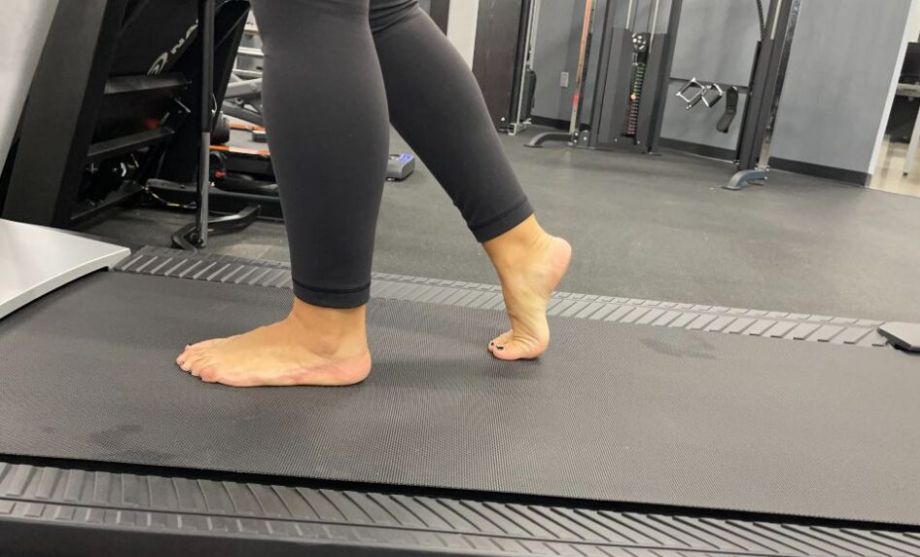We test and review fitness products based on an independent, multi-point methodology. If you use our links to purchase something, we may earn a commission. Read our disclosures.
In 2009, author Christopher McDougall published “Born to Run,” a book that detailed his experience as a barefoot runner. He learned of the benefits of barefoot running while living with an elusive tribe of mountain foot racers in the mountains of Mexico.
McDougall’s book popularized barefoot running and led many runners to abandon some of the best running shoes in favor of minimalist shoes. I personally got into barefoot running around 2014 and have since found my way into cycling and competitive running, but barefoot running still humbles me. I’ve learned that there’s a lot that goes into it, and it’s not something you should rush into. Below, I’ll give an overview of barefoot running—the biomechanics, running form, minimalist running shoes, and more.
Is Barefoot Running Good for You?
Running is one of the best ways to improve your overall health and fitness. It’s a great way to increase caloric output, improve aerobic endurance, and strengthen lower body muscles1. Running can improve your mood2 and even lower all-cause mortality3. The same goes for barefoot running.
Barefoot running is a great way to improve your running biomechanics and familiarize yourself with a new running style, according to the Cleveland Clinic. While it requires a different technique compared to running in highly cushioned shoes or stability running shoes, it can improve running economy and reduce the risk of running injuries.
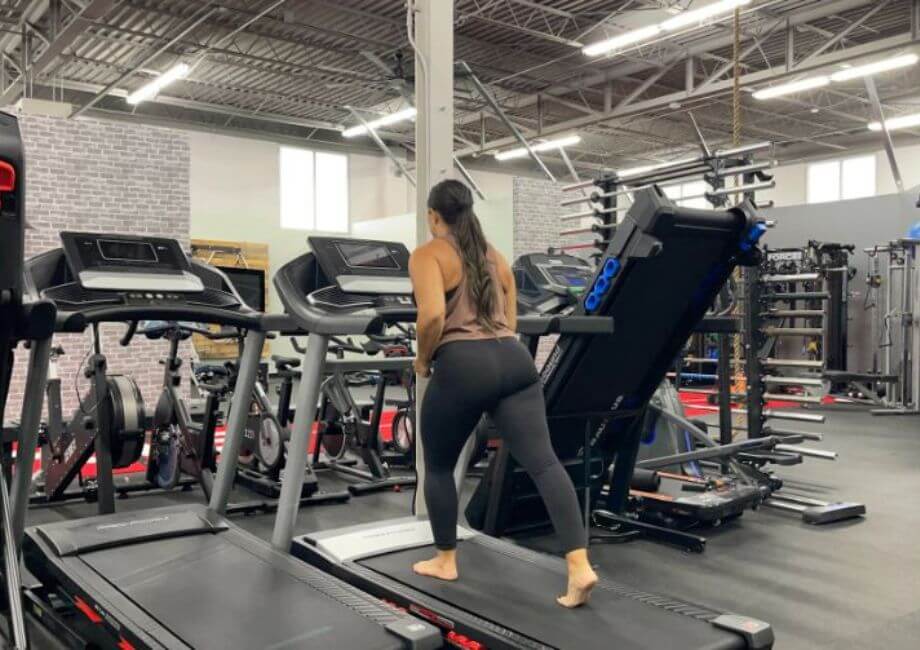
Barefoot running can also improve your biomechanics to promote forefoot and midfoot striking. This is important for overall running technique but is especially important for those who are heavy heel strikers. We’ll explore this in more detail below.
RELATED: How to Start Running
Benefits of Running Barefoot
Barefoot running may seem unnatural, but it’s actually been shown to have many benefits beyond traditional running. Let’s explore the most common and impactful ones below.
Can Improve Foot Strike
A major component of running economy and injury risk is foot strike. Forefoot strike and midfoot strike patterns are optimal, as they transfer energy and impact forces efficiently. Heel striking generally hampers energy transfer and increases the force of impacts.
Indeed, an article published in Nature in 20104 looked at foot strike patterns among barefoot and shod runners (runners who wear cushioned shoes). It found that forefoot strike and midfoot strike patterns were much more common among barefoot runners. Traditional shod runners were more likely to heel strike and thus had more injuries. Barefoot runners were more likely to injure the bottom of their feet, as expected. But barefoot shoes, like the Vibram Five Fingers, can help protect your tootsies while promoting that ideal foot strike.
RELATED: Xero 360 Shoes Review
Can Reduce Injuries
According to the latest running statistics, plantar fasciitis, knee pain, and shin splints are some of the most common running injuries. A 2016 article published in the British Journal of Sports Medicine5 showed barefoot runners reported fewer instances of plantar fasciitis compared to traditional shod runners. Another study conducted in 20226 showed that barefoot running on grass can help alleviate symptoms of plantar fasciitis.
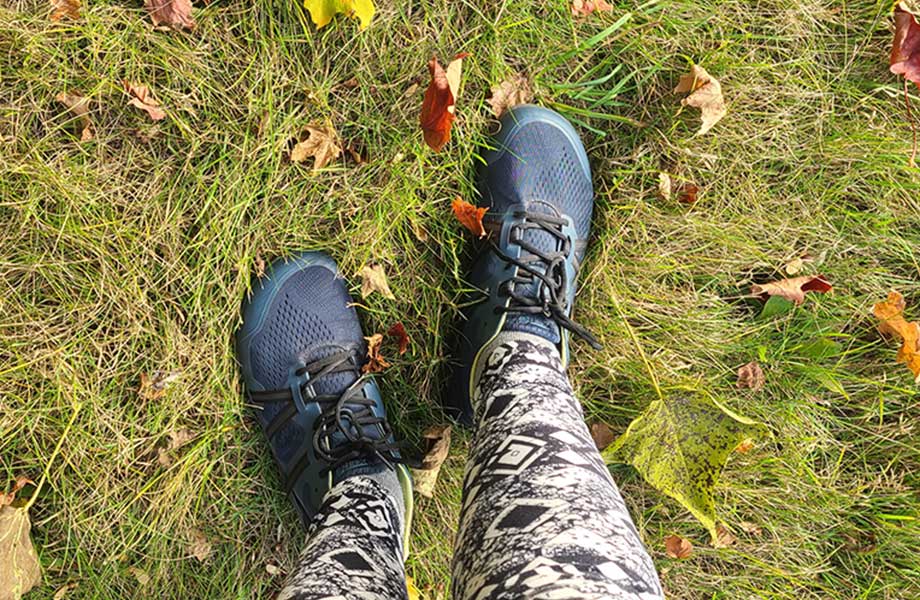
Barefoot running may also improve existing knee pain and prevent further knee injuries. A 2014 study published in Clinical Biomechanics7 showed that barefoot running and barefoot shoes can reduce knee pain. A separate 2014 study8 showed similar decreases in forces on the knees, resulting in decreased knee pain.
Additionally, running barefoot can strengthen certain muscles in a way traditional running might not.
Can Improve Running Economy
Running economy is basically how well your body uses its muscles to maintain proper posture and technique. Things like forefoot strike or midfoot strike, proper cushioning, oxygen consumption, and cadence all contribute to your running economy and help keep you injury-free. Poor biomechanics contribute to heel strike and excessive pronation, both of which are related to higher injury rates.
A meta-analysis published in 20139 looked at the biomechanical differences between barefoot and shod runners. The review found that barefoot running is associated with improvements in foot strike, lower leg movement, and cadence, which equate to improved running economy. You may also find improvements in your overall aerobic performance, but this might have more to do with your increased capacity for running longer distances.
RELATED: Garmin Forerunner 965 Review
Barefoot Running Technique
Barefoot running is more demanding than regular running. Whether you’re an elite barefoot trail runner or throwing on some minimal shoes for the first time, here are some techniques that can help keep you healthy and injury-free. It’s also a good idea to consult a podiatrist if you have any doubts about your abilities.
Avoid Heel Striking
Again, foot strike is crucial. When running barefoot, you’ll naturally get up on your toes or the balls of your feet for a more prominent forefoot strike, similar to sprinting. Avoid heel striking. Be prepared for some new sensations on your Achilles tendon and calves. They will be doing a bit of extra work, so go easy.
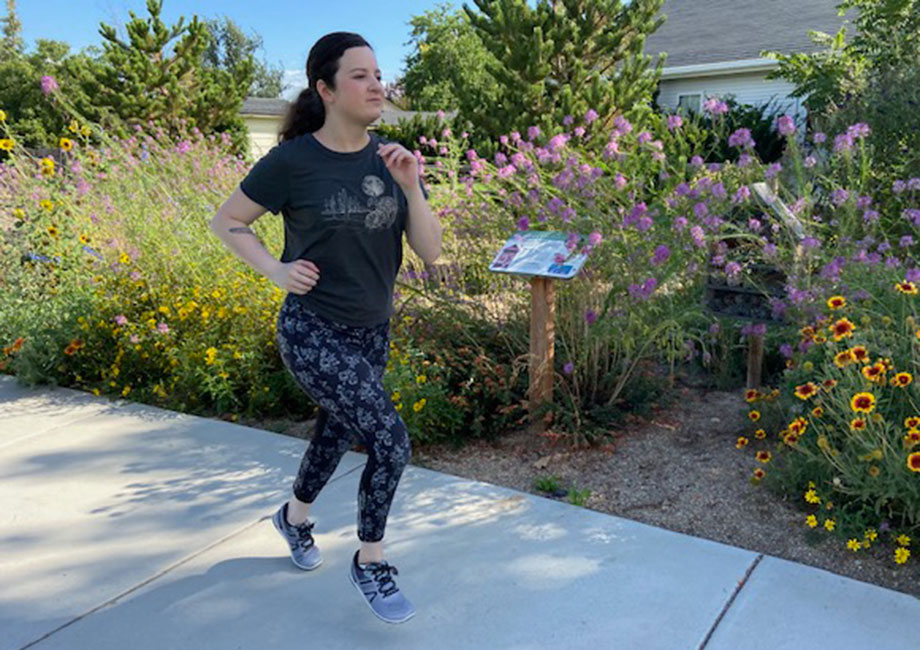
RELATED: Best Running Shoes for Women
Be Mindful of Your Cadence
Cadence is foot turnover. When you start barefoot running, you’ll be up on your feet, and your cadence will naturally be higher. Your cadence will depend on your stature and running ability, but you will definitely have some happy feet. For instance, my cadence in shoes is around 175 steps per minute (SPM); when I’m barefoot, it’s around 190.
Start With Short Distances
Unless you’re an elite Tarahumara trail runner from the Copper Canyons of Mexico, keep the mileage low at first. Whether you wear long-distance running shoes or barefoot shoes, running requires more whole-body endurance. If you’re not used to longer runs, your body may not be able to maintain ideal mechanics, meaning your form and performance will suffer big time. Train light and get your foot muscles used to more activation. Add more miles as the soreness becomes less common.
RELATED: Tips for Running Long Distance
Try Barefoot Running Shoes
You can wear shoes and still be a barefoot runner. There are tons of minimalist shoes, like the ever-popular Vibram Five Finger shoes. These ultra-minimalist shoes promote a more natural running feel with the protection of a more substantial shoe. New Balance and Xero also make zero-drop minimal cushioning shoes with Velcro, laces, and wide toe boxes. Plus you can wear them into stores in between runs without getting weird looks.
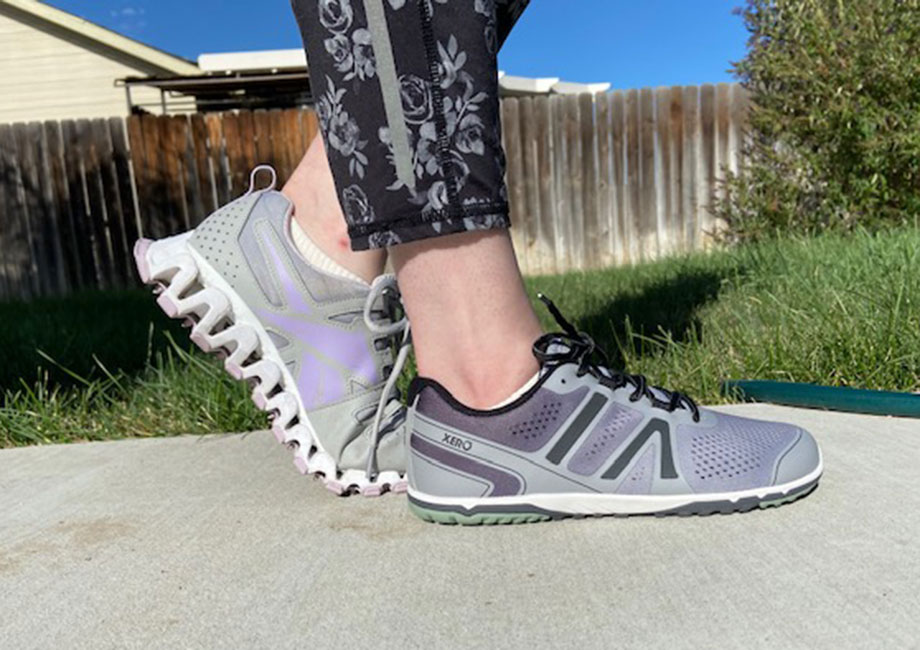
In general, be prepared for your feet to work in new ways. Your barefoot running form won’t be too different from running in shoes. Find the right barefoot shoes and get used to the feeling. Try running on grass or soft ground to adjust. Get your knees up a little higher and start turning your feet over a little quicker. Pace yourself—doing too much or too long too soon can result in running injuries like sore Achilles tendons or shin splints.
RELATED: Xero Shoes Speed Force Review
Barefoot Running: Final Thoughts
Barefoot running is a popular, albeit contentious, sport. It can be beneficial, but it’s definitely a new sensation, whether you’re a seasoned runner or a newbie. Yes, it may take some time to get used to, but it may be the motivation you need to get excited about running. Here are some key takeaways when it comes to barefoot running:
- I recommend running with minimalist shoes to keep your feet protected. You never know what you’ll encounter on the road or trail.
- Barefoot running may help reduce the risk or severity of common running injuries like knee pain (patellar tendonitis) and plantar fasciitis.10
- Barefoot running forces you to use your feet differently. You’ll assume a more upright stance with a more prominent forefoot strike and notice changes in your cadence, posture, and overall running form.
Barefoot Running: FAQs
Is running barefoot bad?
Not necessarily. Barefoot running is likely just as beneficial as regular running. It has been shown to reduce the risk of some injuries5. However, just like any new sport, barefoot running may take some time to get used to.
Do any pro runners run barefoot?
Most elite runners race in shoes for obvious advantage. But Chris McDougal, Scott Jurek, and Abebe Bikila are some professional runners who are known to race barefoot. Many pro runners will train or do drills barefoot. However, road racing requires traction and form that barefoot running can’t offer.
What are the disadvantages of barefoot running?
The main disadvantages of barefoot running are the adjustment period and the lack of foot protection. Barefoot running compromises speed, at least in the beginning while your body adjusts to no longer being in running shoes. Poor traction is also a concern with barefoot running, particularly on roads and trails.
What do podiatrists think of barefoot running?
There are mixed opinions. Some podiatrists advocate for barefoot running as a holistic approach to running. There is a joke that, in a barefoot world, a podiatrist is out of a job. However, others see no benefit and argue that it contributes to greater injury risk.
References
- Hespanhol Junior LC, Pillay JD, van Mechelen W, Verhagen E. Meta-Analyses of the Effects of Habitual Running on Indices of Health in Physically Inactive Adults. Sports Med. 2015 Oct;45(10):1455-68. doi: 10.1007/s40279-015-0359-y. PMID: 26178328; PMCID: PMC4579257.
- Damrongthai, C., Kuwamizu, R., Suwabe, K. et al. Benefit of human moderate running boosting mood and executive function coinciding with bilateral prefrontal activation. Sci Rep 11, 22657 (2021). https://doi.org/10.1038/s41598-021-01654-z
- Lee DC, Pate RR, Lavie CJ, Sui X, Church TS, Blair SN. Leisure-time running reduces all-cause and cardiovascular mortality risk. J Am Coll Cardiol. 2014 Aug 5;64(5):472-81. doi: 10.1016/j.jacc.2014.04.058. Erratum in: J Am Coll Cardiol. 2014 Oct 7;64(14):1537. PMID: 25082581; PMCID: PMC4131752.
- Lieberman, D., Venkadesan, M., Werbel, W. et al. Foot strike patterns and collision forces in habitually barefoot versus shod runners. Nature 463, 531–535 (2010). https://doi.org/10.1038/nature08723
- Altman AR, Davis IS. Prospective comparison of running injuries between shod and barefoot runners. Br J Sports Med. 2016 Apr;50(8):476-80. doi: 10.1136/bjsports-2014-094482. Epub 2015 Jun 30. PMID: 26130697.
- MacGabhann S, Kearney D, Perrem N, Francis P. Barefoot Running on Grass as a Potential Treatment for Plantar Fasciitis: A Prospective Case Series. Int J Environ Res Public Health. 2022 Nov 22;19(23):15466. doi: 10.3390/ijerph192315466. PMID: 36497540; PMCID: PMC9741467.
- Sinclair, J. (2014). Effects of barefoot and barefoot inspired footwear on knee and ankle loading during running. Clinical Biomechanics, 29(4), 395–399. https://doi.org/10.1016/j.clinbiomech.2014.02.004
- Bonacci J, Vicenzino B, Spratford W, et al. Take your shoes off to reduce patellofemoral joint stress during running. British Journal of Sports Medicine 2014;48:425-428.
- Hall JP, Barton C, Jones PR, Morrissey D. The biomechanical differences between barefoot and shod distance running: a systematic review and preliminary meta-analysis. Sports Med. 2013 Dec;43(12):1335-53. doi: 10.1007/s40279-013-0084-3. PMID: 23996137.
- Umar H, Idrees W, Umar W, Khalil A, Rizvi ZA. Impact of routine footwear on foot health: A study on plantar fasciitis. J Family Med Prim Care. 2022 Jul;11(7):3851-3855. doi: 10.4103/jfmpc.jfmpc_637_21. Epub 2022 Jul 22. PMID: 36387720; PMCID: PMC9648311.
Further reading

If you’re getting noise complaints from the neighbors or roommates about your garage gym, here’s some solutions on how to soundproof a home gym. Read more

In our Bowflex BXT216 review, we go over this now-discontinued treadmill and help you find one that will suit your needs. Read more

What is the popular 12-3-30 workout, and could it elevate your next cardio session? We asked a personal trainer to break it down. Read more

Are you looking to build a superhero bod? Check out the Chris Hemsworth workout routine, and you, too, could build an Avengers-worthy physique! Read more

